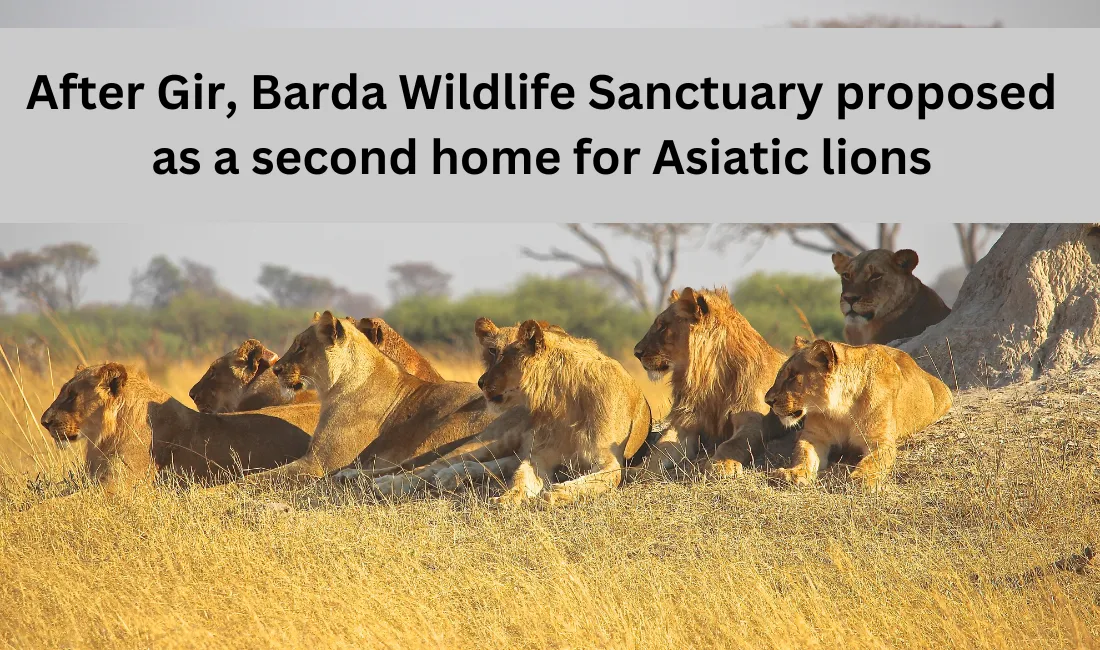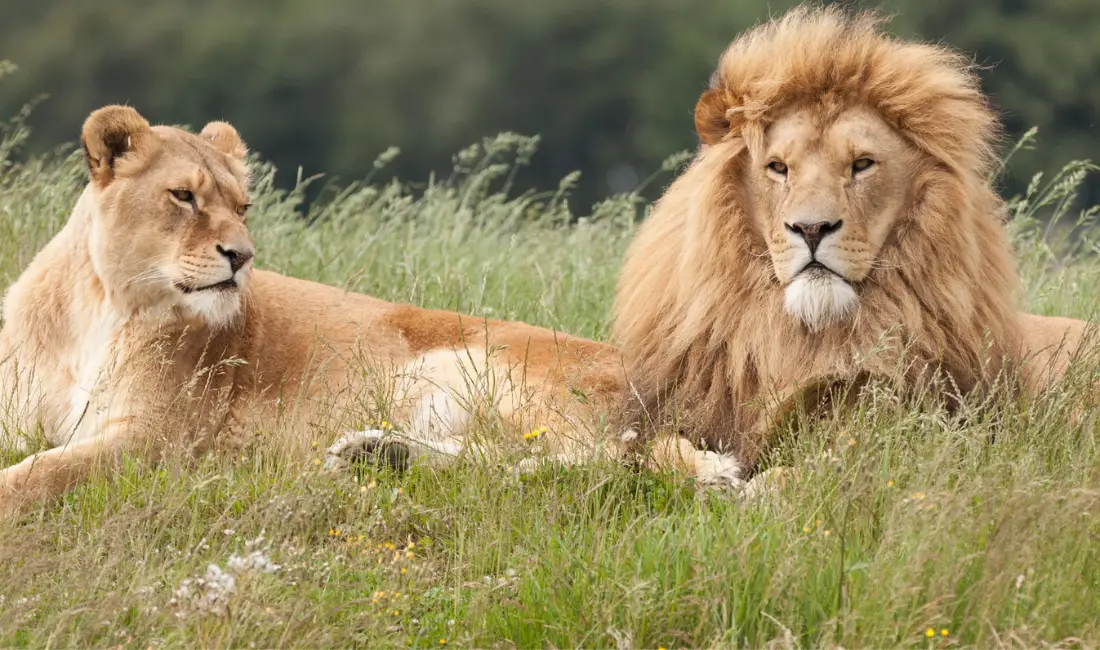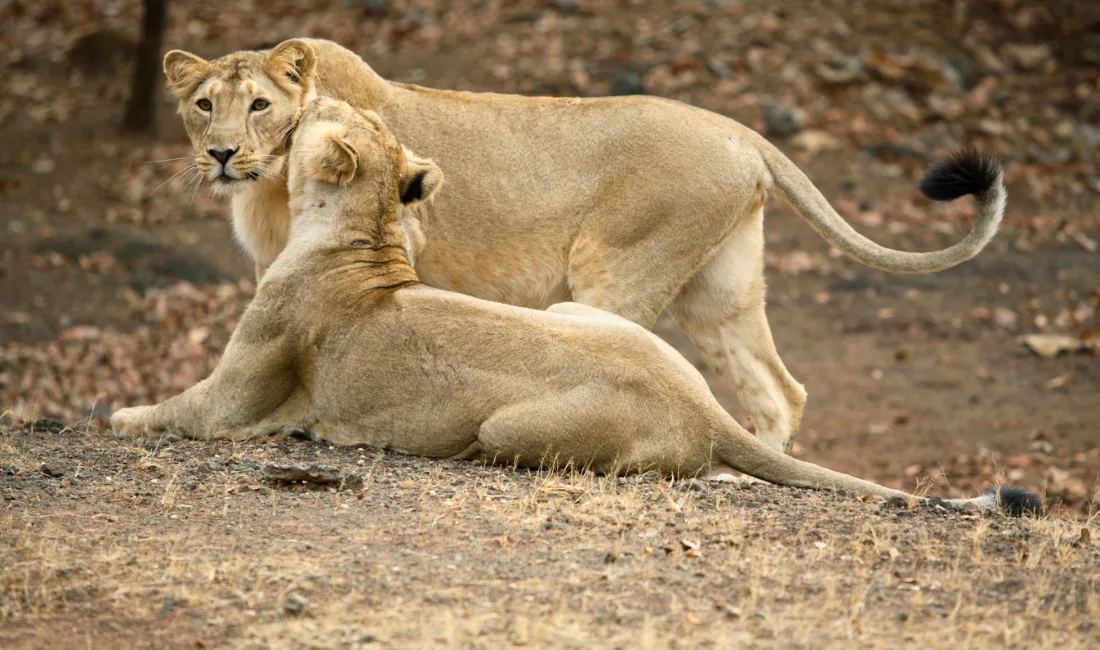Asiatic lions, once on the brink of extinction, found a lifeline in the protected confines of Gir National Park. This sanctuary, located in Gujarat, India, has played a pivotal role in the conservation of this majestic species. However, with the lion population in Gir reaching its capacity, there’s a pressing need to explore additional habitats. This article delves into the proposal to designate Barda Wildlife Sanctuary as a second home for Asiatic lions.
Why a Second Home?
Population Growth Challenges in Gir
Gir National Park has been a sanctuary for Asiatic lions for decades, but the increasing lion population poses challenges to the ecosystem’s balance. Overcrowding can lead to resource depletion, affecting both flora and fauna.
Need for Conservation Measures
Conservationists emphasize the urgency of implementing measures to ensure the long-term survival of Asiatic lions. A diversified approach involving multiple habitats is crucial to their preservation.
Diversifying Habitats for Asiatic Lions
Creating a second home for Asiatic lions mitigates the risks associated with a single habitat. It provides a safety net, reducing the vulnerability of the entire population to unforeseen events.
Barda Wildlife Sanctuary Overview
Location and Geography
Situated near Gir, Barda Wildlife Sanctuary offers a suitable environment for the translocation of Asiatic lions. Its diverse topography and ecosystems make it a promising candidate for a second home.
Flora and Fauna
Barda boasts a rich biodiversity, with varied vegetation and wildlife. The sanctuary is home to numerous species, and its ecosystems can support the unique requirements of Asiatic lions.
Conservation Efforts in Barda
Existing conservation initiatives in Barda serve as a foundation for the proposed project. Local authorities have implemented measures to protect the sanctuary’s natural resources and biodiversity.
The Proposal Process
Stakeholder Involvement
The proposal involves collaboration between wildlife experts, government agencies, and local communities. Stakeholder engagement is essential for the success of the project.
Scientific Studies Supporting the Proposal
Comprehensive studies have been conducted to assess Barda’s suitability as a second home for Asiatic lions. Scientific evidence forms the basis for decision-making and project planning.
Government Initiatives and Approvals
Government support is crucial for the project’s success. Necessary approvals, regulations, and funding are integral to the seamless execution of the proposal.
Conservation Benefits
Enhanced Breeding Opportunities
A second home in Barda provides additional breeding opportunities for Asiatic lions, contributing to the growth of their population and genetic diversity.
Reducing the Risk of Diseases
Overcrowding in a single habitat increases the risk of diseases spreading among the lion population. Barda’s spacious environment helps mitigate this risk.
Preserving Genetic Diversity
Diversified habitats play a key role in preserving the genetic diversity of endangered species. This is crucial for the long-term health and adaptability of the Asiatic lion population.
Challenges and Concerns
Human-Animal Conflict
Introducing Asiatic lions to a new habitat raises concerns about potential conflicts with local communities. Proper mitigation strategies and community engagement are essential to address this issue.
Environmental Impact Assessments
Thorough environmental impact assessments are crucial to understand and minimizing the project’s potential impact on Barda’s ecosystems.
Mitigation Strategies
Developing effective mitigation strategies ensures a balanced coexistence between Asiatic lions and the local environment, addressing concerns and fostering harmony.
Community Involvement
Local Support and Awareness
Involving local communities in the conservation effort builds support and awareness. Education programs can help dispel myths and create a sense of shared responsibility.
Economic Benefits for Nearby Communities
Conservation initiatives can bring economic benefits to nearby communities, creating incentives for their active participation in the project.
Education and Outreach Programs
Educational programs play a pivotal role in fostering a sense of environmental responsibility and cultivating a positive attitude toward wildlife conservation.
Successful Examples
Similar Initiatives Worldwide
Examples from around the world highlight successful initiatives involving the translocation of endangered species to new habitats.
Positive Outcomes and Lessons Learned
Examining past projects provide valuable insights into successful outcomes and lessons that can be applied to the Barda Wildlife Sanctuary proposal.
Potential for Success in Barda
Considering the similarities with successful projects, Barda has the potential to emerge as a thriving second home for Asiatic lions.
Future Prospects
Long-Term Impact on Asiatic Lion Conservation
The successful implementation of the Barda project can have a lasting positive impact on the conservation of Asiatic lions.
Replication in Other Regions
The success of Barda can serve as a blueprint for similar projects in other regions facing similar conservation challenges.
Global Collaboration for Wildlife Conservation
International collaboration is essential for addressing global conservation challenges. Barda’s success can contribute to global efforts in preserving endangered species.
Critiques and Opposition
Perspectives Against the Proposal
Some individuals and groups may oppose the translocation project, citing concerns about potential risks and drawbacks.
Addressing Concerns and Finding Common Ground
Addressing concerns through transparent communication and incorporating feedback is crucial for building consensus and finding common ground.
Balancing Conservation and Human Interests
Striking a balance between conservation goals and the interests of local communities is essential for the project’s long-term sustainability.
Key Takeaways
Importance of Diversified Habitats
The need for diversified habitats to ensure the survival and well-being of endangered species is a key takeaway from the Barda proposal.
Collaborative Efforts for Wildlife Conservation
Success in wildlife conservation requires collaboration between experts, governments, and local communities.
The Role of Communities in Preserving Endangered Species
Local communities play a pivotal role in the success of conservation projects, emphasizing the importance of their active involvement.
Conclusion
In conclusion, the proposal to make Barda Wildlife Sanctuary a second home for Asiatic lions represents a critical step in ensuring the long-term survival of this endangered species. The benefits, challenges, and potential for success make it a worthwhile endeavor that requires collective effort and support.




